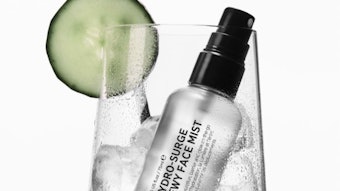"Time to Explore Algal Bioactives," an analyst insight post by Cathy Boyle, a contributing analyst for Euromonitor International, dives into the wonders of algal ingredients—and their future in beauty products.
Boyle writes, "Algal ingredients appear in a wide range of different products and brands in the personal care market and wear very different guises in each area. For example, mainstream brands often use a basic seaweed extract simply as a way to add a more natural feel to their products, while natural personal care brands use seaweed extracts as active ingredients and make specific claims regarding their role. More recently, however, algal ingredients have taken a further step forward and new ingredients sourced from microalgae have started to feature in more advanced skin care brands as anti-ageing components. This exciting development is explored in more detail in Algal Ingredients: A More Sustainable Solution?.
"As in the food industry, algal ingredients are yet to be exploited to any significant degree in personal care, although this is starting to change as the potential is more widely recognised. Certainly, the scope for development of algal ingredients for personal care applications is vast, with many algal species remaining entirely untapped. Yet it would appear from recent R&D that algae are ideal raw materials for skin care products, thanks largely to the protective cells that they use to shield themselves from the harmful effects of the sun.
"There has been a steady trickle of new algal ingredients onto the market over the past 5-10 years and anti-ageing has been a core focus for many of these. In 2011, for example, Solazyme launched its own Algenist range of skin care products using alguronic acid, a protective algal oil that it has identified. Similarly, Frutarom launched the Alguard ingredient, which is described as a skin active shield and is derived from the protective polysaccharide emitted from the cells of the red microalgae Porphyridium sp. In 2012, Evonik also entered the market for algal skin benefit agents with its Tego Stemlastin ingredient derived from the red microalgae Cyanidium caldarium (often found in acid hot springs), which is said to improve skin elasticity.
More recent NPD in algal bioactives, however, suggests that ingredients developers are broadening their horizons and are no longer limited to the anti-ageing market alone. For example, in 2012 and 2013, new algal ingredients have been added in the hair care arena, including Provital Group’s Keramare, derived from Cystoseira compressa brown seaweed and said to strengthen and repair hair from the inside out, plus Symrise’s SymHair, which is derived from microalgae and aimed at the prevention of hair loss. At the same time, Symrise also launched SymBronze, a pigmentation enhancer from microalgae to induce sunless tanning and accelerate a tan.
"Bioactives with specific benefits are very much in demand throughout the personal care market as the industry looks towards natural resources for a more sustainable future. Algaculture can offer significant sustainability benefits assuming it is controlled so as not to impact on marine environments and eco-systems. Microalgae, in particular, can be grown in arid areas otherwise unsuitable for agriculture, while they feed only on sunlight and waste carbon dioxide, thus delivering carbon neutral or even carbon negative profiles. Algaculture also uses less land area for greater yields so it offers multiple advantages compared with many other botanical sources. Although the industry remains underdeveloped and extraction of active ingredients can be costly, algaculture must be considered in future R&D strategies within personal care and is an area that is more than ready for further investment," she concludes.










